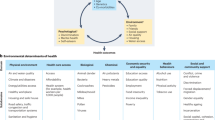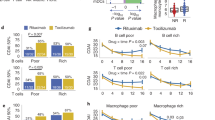Abstract
Rheumatologists with clinical expertise should perform clinical investigations of new molecules in an effort to discover therapies that could be of greater benefit or safety than those currently available for patients with chronic rheumatic diseases. Over the past few years, many studies have been conducted outside the United States and Europe because of the dearth of investigative sites in these countries. A clinician, whether in private practice or academia, who has the resources and desire to conduct clinical investigations, should be able to become involved in the process. The task of starting a new investigative unit is daunting, as it involves acquiring studies, hiring staff and obtaining space prior to any cash flow. If done properly, however, clinical investigation can be rewarding—both intellectually and financially.
Key Points
-
The physician–investigator needs to pursue the acquisition of appropriate studies for the clinical trial unit aggressively
-
The protocol must be carefully analyzed by the investigator to be certain the trial has a benefit for patients that outweighs the risk, that patients who will agree to enroll in the study and meet inclusion/exclusion criteria are available, and that the required procedures can be performed
-
A fair and equitable contract with a reasonable indemnification and confidentiality clause, and which provides for a fair budget that is paid fairly, must be negotiated
-
Methods to recruit suitable patients in an expeditious manner, preferably before the start of the study at the investigative site, need to be developed
-
Performing the study well, adhering to good clinical practice, and enrolling at least the contracted number of patients all increase the chances of obtaining further studies from the sponsor
This is a preview of subscription content, access via your institution
Access options
Subscribe to this journal
Receive 12 print issues and online access
$189.00 per year
only $15.75 per issue
Buy this article
- Purchase on SpringerLink
- Instant access to full article PDF
Prices may be subject to local taxes which are calculated during checkout
Similar content being viewed by others
References
Fleischmann R (2007) Primer: establishing a clinical trial unit—regulations and infrastructure. Nat Clin Prac Rheumatol 3: 234–239
Ginsberg D and White A (1999) The Investigator's Guide to Clinical Research, edn 2. Boston: CenterWatch
Anderson DL (2001) Guide to Patient Recruitment: Today's Best Practices and Proven Strategies. Boston: CenterWatch
Butterfield PG et al. (2003) Overcoming subject recruitment challenges: strategies for successful collaboration with novice research agencies. Appl Nurs Res 16: 46–52
Carew BD et al. (1992) Recruitment strategies in the studies of left ventricular dysfunction (SOLVD): strategies for screening and enrollment in two concurrent but separate trials. The SOLVD Investigators. Control Clin Trials 13: 325–338
Loescher LJ et al. (1990) Development of a contingency recruitment plan for a phase III chemoprevention trial of cervical dysplasia. Prog Clin Biol Res 339: 151–163
Sellors J et al. (2002) Recruiting family physicians and patients for a clinical trial: lessons learned. Fam Pract 19: 99–104
Taylor KM et al. (1984) Physicians' reasons for not entering eligible patients in a randomized clinical trial of surgery for breast cancer. N Engl J Med 310: 1363–1367
Bernstein M (2003) Conflict of interest: it is ethical for an investigator to also be the primary care-giver in a clinical trial. J Neurooncol 63: 107–108
Chassany O and Duracinsky M (1999) Ethics and clinical trials. Fundam Clin Pharmacol 13: 437–444
Daugherty CK (1999) Ethical issues in the development of new agents. Invest New Drugs 17: 145–153
Daugherty CK (1999) Impact of therapeutic research on informed consent and the ethics of clinical trials: a medical oncology perspective. J Clin Oncol 17: 1601–1617
Donner A (1982) The exclusion of patients from a clinical trial. Stat Med 1: 261–265
Gallelli JF (1991) Liability and new drug studies. Informed consent and clinical trials at the National Institutes of Health. J Pharm Technol 7: 9–12
Kardinal CG (1994) Ethical issues in cancer clinical trials. J La State Med Soc 146: 359–361
Klein JO (1979) Medical ethics and controlled clinical trials. Ann Otol Rhinol Laryngol Suppl 88: 99–106
Levine RJ (1993) Ethics of clinical trials. Do they help the patient? Cancer 72 (Suppl): 2805–2810
Topol EJ et al. (1992) Confronting the issues of patient safety and investigator conflict of interest in an international clinical trial of myocardial reperfusion. Global Utilization of Streptokinase and Tissue Plasminogen Activator for Occluded Coronary Arteries (GUSTO) Steering Committee. J Am Coll Cardiol 19: 1123–1128
CenterWatch [www.centerwatch.com]
The Pink Sheet [www.thepinksheet.com/fdcreports/pink/showHome.do]
Author information
Authors and Affiliations
Ethics declarations
Competing interests
R.F states the following conflict of interest disclosures: that he is a shareholder in Metroplex Clinical Research Center and Radiant Research (Dallas, TX).
Rights and permissions
About this article
Cite this article
Fleischmann, R. Primer: establishing a clinical trial unit—obtaining studies and patients. Nat Rev Rheumatol 3, 459–463 (2007). https://doi.org/10.1038/ncprheum0554
Received:
Accepted:
Issue date:
DOI: https://doi.org/10.1038/ncprheum0554
This article is cited by
-
Clinical studies can be performed in an ethical manner
Nature Clinical Practice Rheumatology (2008)
-
Author response to “Clinical studies can be performed in an ethical manner”
Nature Clinical Practice Rheumatology (2008)



